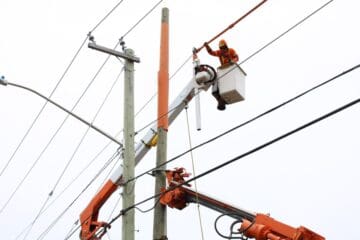FERC’s Anti-Renewable PJM MOPR
In mid-December, by a 2-1 vote of FERC Commissioners, a new rule passed that will force regional grid operator PJM to use a MOPR (minimum offer price rule) for all new capacity. What this will essentially do is create a false floor for how low a price offer in the market can go, creating an unnecessary hardship for new state-incentivized clean energy coming onto the grid and into the capacity markets. It will, however, make it easier for existing dirty energy generation to compete. The precursor to this new structuring happened in June of 2018, when FERC declared ‘price-distorting impacts’ of state clean energy programs “unjust and unreasonable.” This view served as a warning for what was to come. Yet at the time, the then five-commissioner panel had averted any new rules or restructuring for PJM capacity market reform. (The current vote was a 2-1 count, because 2 seats on FERC’s commission are currently empty).
Neil Chatterjee, FERC Chairman, defended the decision as a way to “level the playing field” and “protect the competitive capacity market” against “certain generation resources [that] threaten the competitiveness of PJM’s capacity market.” What it will actually be doing is heavily penalizing the new incoming capacity: renewables (since no one is building more coal plants).
So who will be effected in the immediate future? The ruling is set to take place 90 days from the December 19th decision. The solar projects already completed will be grandfathered in from this rule (about 5,000 MW) but the renewable projects in the approval queue (about 38,000 MW) will incur this penalty, basically making it impossible for them to enter PJM’s capacity market.
Commissioner Glick, the only dissenting voice, has pointed out the financial impacts of this decision will be enormous, estimating at least $2.4 billion per year as state-subsidized renewable projects continue to develop and go live without being able to enter the grid operator’s market.
Mike Jacobs of Union of Concerned Scientists calls the decision an “active attack” on state efforts to address carbon emissions.
But more than that, the FERC PJM ruling is flawed at its origin. The reason why new forms of energy are coming online is because we are beginning to understand the global costs if we don’t do it. In other words, if fossil fuel generation plants emitted rainbows and oxygen, there would not be an urgent need to switch to clean generation ASAP. But they don’t. They and other dirty energy forms emit CO2. And at the writing of this blog, we are at 415 ppm- way, WAY outside of the normal carbon cycle. Rainbows & butterflies would’ve had us at a normal 285 ppm. Yet for now, we’re running out of time for aggressive deployment to turn this thing around.




